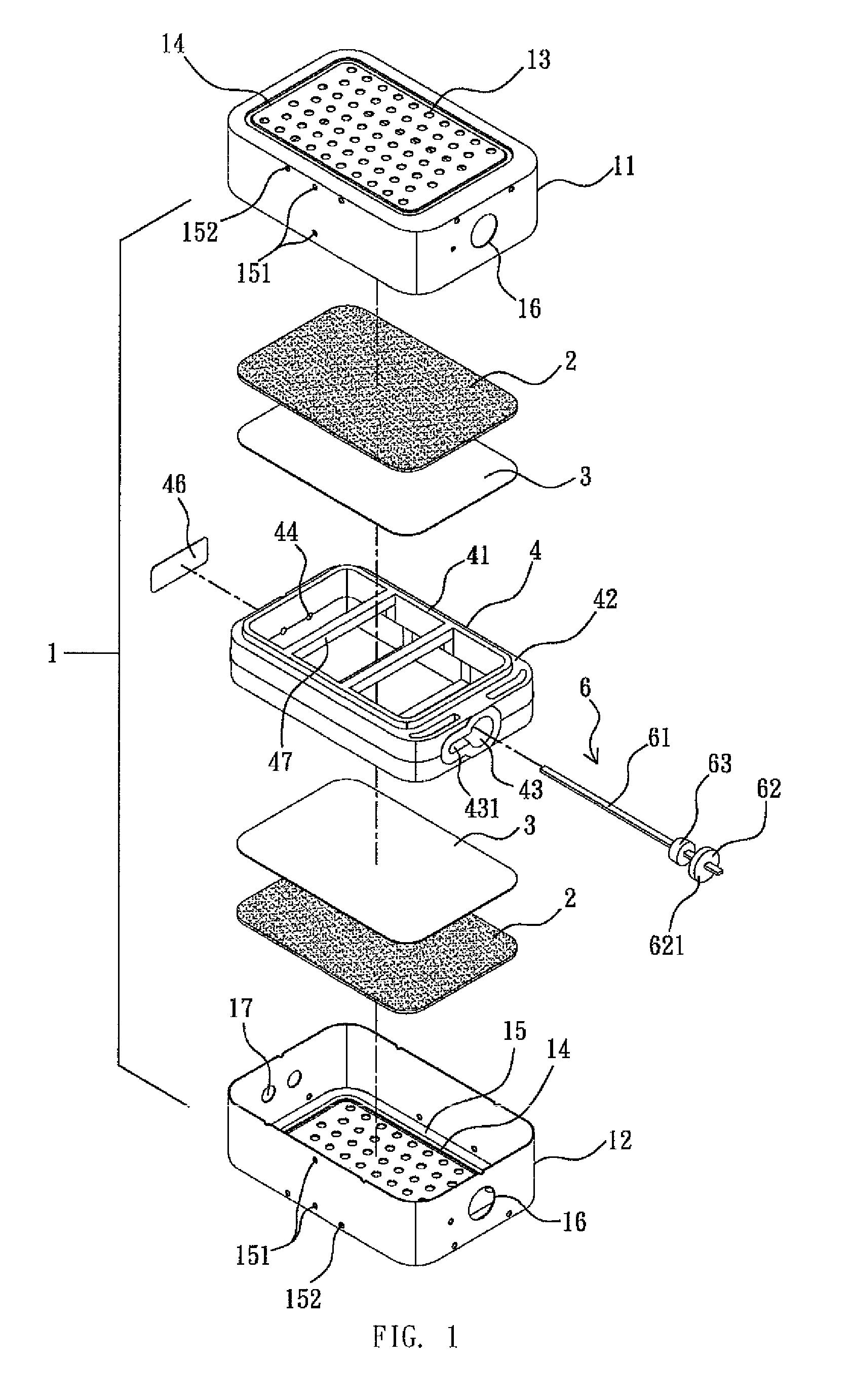Packaging structure of low-pressure molded fuel cell
a fuel cell and packaging technology, applied in the field of fuel cells, can solve the problems of reduced capacity, electrolyte leakage, electrolyte in the cell diffuse, etc., and achieve the effects of preventing the air cathode from breaking and deforming, good tensile strength and pressure resistance, and good viscosity and elasticity
- Summary
- Abstract
- Description
- Claims
- Application Information
AI Technical Summary
Benefits of technology
Problems solved by technology
Method used
Image
Examples
Embodiment Construction
[0041]The present invention will now be described with some preferred embodiments thereof. For the purpose of easy to understand, elements that are the same in the preferred embodiments are denoted by the same reference numerals.
[0042]The term “electrolyte leakage” used herein refers to the leakage of the alkali-electrolyte form the cell. The term “C-sectioned” of “C-sectioned annular structure” used herein refers that the cross-section view of the hot melt adhesive layer in the fuel cell shows a C-shaped pattern. The term “C-sectioned flow channel” used herein refers to a flow channel with a C-shaped cross-section formed by assembling the first receiving spaces, air cathode, separator and the second receiving spaces together.
[0043]Please refer to FIGS. 1 to 5. A packaging structure of a low-pressure molded fuel cell according to a first embodiment of the present invention, which can be, for example, a packaging structure of a low-pressure molded zinc-air cell, substantially compris...
PUM
| Property | Measurement | Unit |
|---|---|---|
| adhesive viscosity | aaaaa | aaaaa |
| adhesive viscosity | aaaaa | aaaaa |
| elongation | aaaaa | aaaaa |
Abstract
Description
Claims
Application Information
 Login to View More
Login to View More - R&D
- Intellectual Property
- Life Sciences
- Materials
- Tech Scout
- Unparalleled Data Quality
- Higher Quality Content
- 60% Fewer Hallucinations
Browse by: Latest US Patents, China's latest patents, Technical Efficacy Thesaurus, Application Domain, Technology Topic, Popular Technical Reports.
© 2025 PatSnap. All rights reserved.Legal|Privacy policy|Modern Slavery Act Transparency Statement|Sitemap|About US| Contact US: help@patsnap.com



